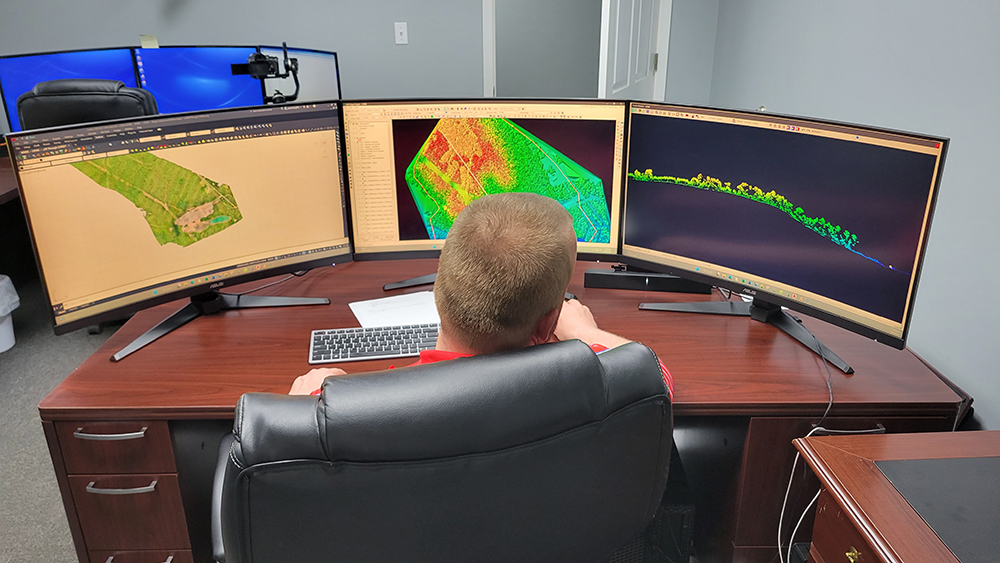A Jasper engineering firm is using drone technology from a Huntsville company to help design a coal conveyor belt.
McGehee Engineering found its niche in Alabama’s coal mining industry using aerial mapping and surveying technology.
The company is using GeoCue’s TrueView LiDAR technology to quickly survey a steep and rugged bluff where they are building a large conveyor belt to transport mining material down the cliff.
LiDAR is an acronym of “light detection and ranging” or “laser imaging, detection, and ranging.” It is a method for determining ranges by targeting an object or a surface with a laser and measuring the time for the reflected light to return to the receiver.
Without Trueview LiDAR, the process would take months to survey using traditional methods, the company said.
The Trueview LiDAR drone will safely and more accurately collect the data for the contours and surface designs needed to engineer the coal conveyor belt.
“Down to Earth,” a documentary-style reality series shows how real surveyors collect data and turn it into real deliverables despite challenging conditions, hidden dangers, and inclement weather.
Those episodes feature the TrueView 3D Imaging Sensor from GeoCue, integrated payloads that include sensors, dual cameras, and IMUs that are compatible with all drone platforms that can support the weight.

In the first episode, the team from McGehee Engineering reviews the project site and begins planning to use TrueView 3D Imagery Sensors to overcome the challenges of the terrain, distance, and bluffs facing the design of the coal belt.
“We’re here today to do a survey for a coal company to give them topo of their belt line leading down to their barge loadout,” said Jordan McGehee, partner with McGehee Engineering. “This is a very difficult section of land that would take two or three months with a traditional team of four or five guys. However, drones are perfectly suited to do a LIDAR survey of the cliff side leading down to the river, to keep our team safe and scan through the thick canopy of the forest.”
In the second episode, the TrueView 515 takes to the air and begins the process of surveying almost 300 acres of steep cliffs and forest.
Stephen Blankenship, Environmental Engineering department manager for McGehee, said he relies on the drone LiDAR to help get their customers accurate and reliable deliverables because he recognizes that photogrammetry could not get the necessary data for this job.
“One of the important factors of choosing to use TrueView 515 for this project,” he said, “is that the LIDAR allows us to access the ground, penetrate the canopy, and ultimately get a good definition for our digital contouring for a belt design.”
In the third and final episode of the coal belt, McGehee and Blankenship head back to the office in Jasper to process the data and create the deliverables in LP360.
“What we hope to be able to provide to our clients through this LiDAR TrueView survey, is to give them the aerial photography, the photogrammetry, but also the digital contour mapping, which will provide our client the topos needed to establish the necessary design work for the conveyor belt and the barge loadout facility,” said Blankenship.
“With the TrueView 515 LiDAR and LP360 software, our customers are extremely happy with the results,” said McGehee. “We’re able to provide a surface model that is unmatched, and we have clients that just rave about our deliverables.”













